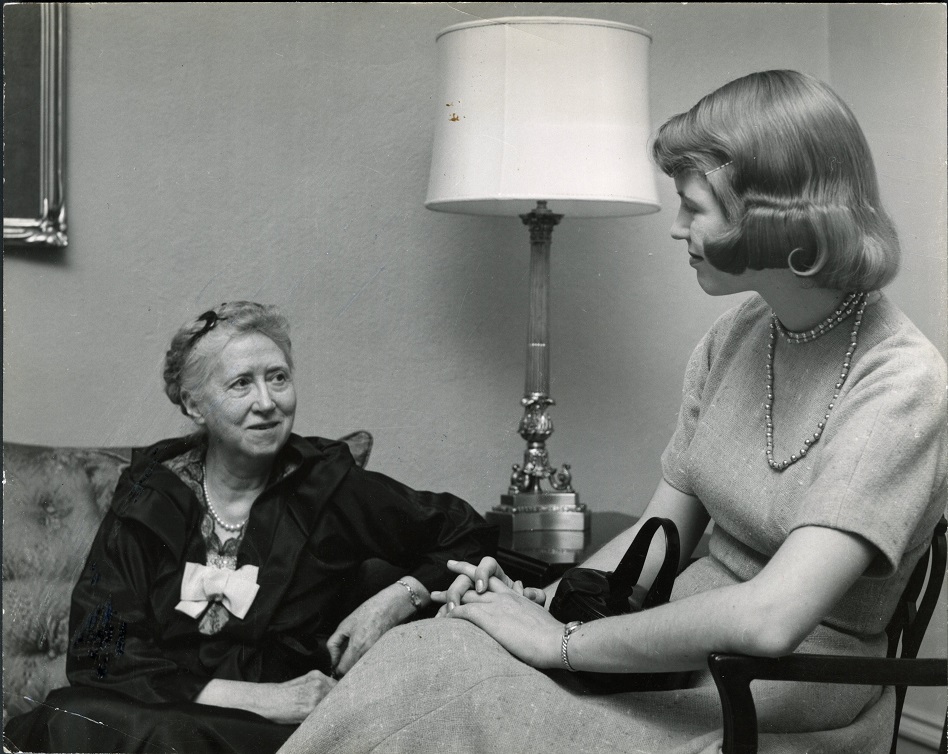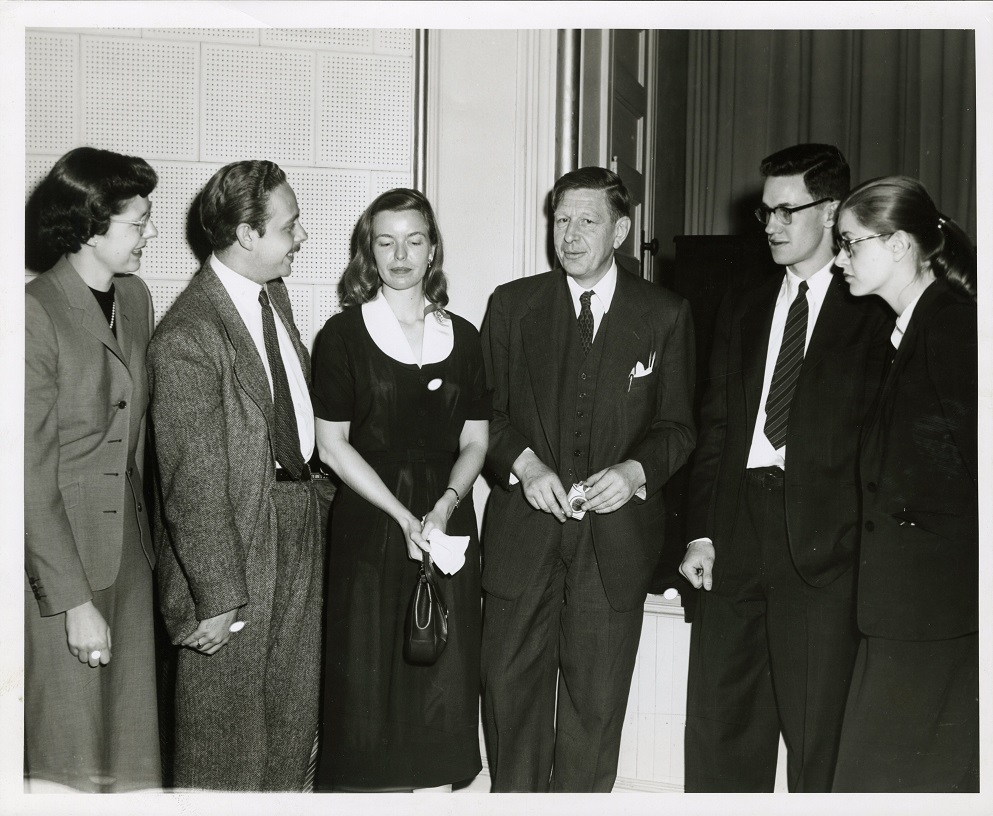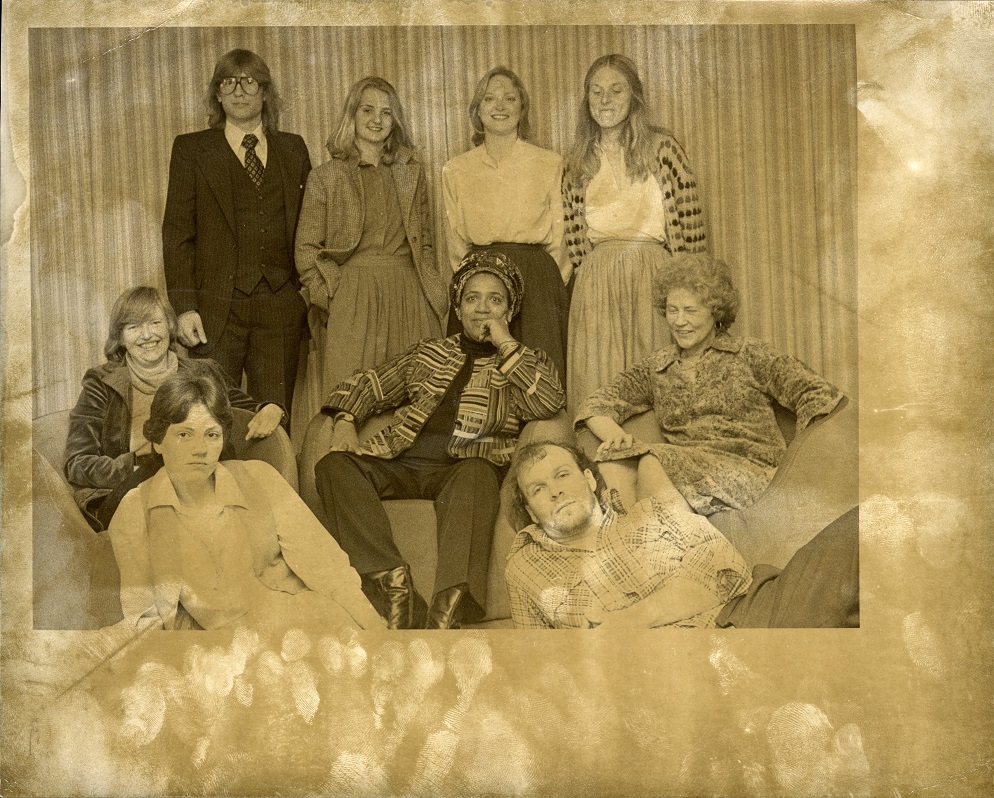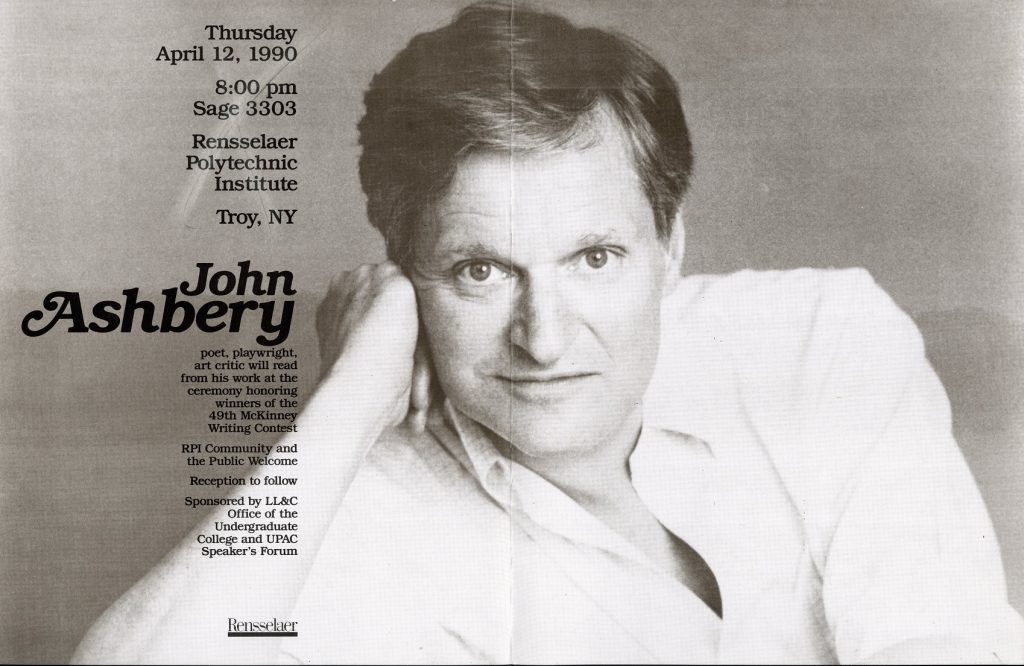The 33rd annual Glascock poetry contest featured not one, but two famous poets in its lineup. Marianne Moore, pictured on the couch, served as one of the three judges who selected Sylvia Plath, a Smith College student at the time, as one of the competition co-winners along with a Wesleyan University student named William Key Whitman. Both extremely influential 20th-century poets, Moore had previously judged the Glascock in 1929 and 1952, and Plath returned to judge the competition a mere four years later in 1959.
Beyond the student competition, the Glascock weekend includes readings by and conversations among prominent poets. In this letter to Mount Holyoke English professor Marianne Brock, William Carlos Williams accepts (with some reluctance) the opportunity to speak about “the writing of verse.” As you can see from the letterhead, Williams was both a celebrated poet and a doctor who practiced medicine in New Jersey for more than forty years. As a Glascock judge, Williams wrote detailed feedback to all the contestants with these letters demonstrating his sarcastic wit, as the opening lines of this letter do, and his generosity towards emerging poets. Brock ran the Glascock competition for over 15 years.
British-American poet W.H. Auden, pictured with cigarettes in his hand in the center, taught at colleges throughout New England during the 1950s and served as a Glascock judge in 1953 along with Leonard Stevens and Louise Bogan, a prominent American poet and New Yorker editor who judged the contest six times. Known for his formal virtuosity and wit, Auden wrote no comments in his ranking of the contestants.
This letter to Joyce Horner outlines Adrienne Rich’s suggested rankings for the student contestants who competed in 1958 and indicates that Rich has more extensive feedback for the three standout contestants. An eminent Second-Wave feminist writer, Rich was known for her political poetry and essays addressing environmental themes, anti-war sentiment, and the lives of women and lesbians, among other subjects. During this period, Glascock judges would rank the contestants and send their comments about the poets’ writings via mail following the Glascock weekend with winners announced after the event.
Poet, essayist, and activist, Audre Lorde is featured seated in the center of the photograph, with essayist Susan Griffin to her left and poet Jean Valentine to her right. A self-described “Black, lesbian, mother, warrior, poet,” Lorde is renowned for her ground-breaking work in addressing racism, misogyny, sexism, homophobia, and classism, and the intersections of all of these. 1979 was the first year that all three Glascock judges were women.
Although most of the Glascock archives collection consists of artifacts and texts directly related to the competition, some objects such as this poster go beyond materials produced by or addressed to the College. The poster promotes a reading that New York School of Poets co-founder, poet, and art critic John Ashbery would be giving in upstate New York. Eight days after this event’s date, Ashbery came to Mount Holyoke to serve as one of the three judges of the 1900 Glascock contest. He later returned to judge the contest a second time in 1999.





